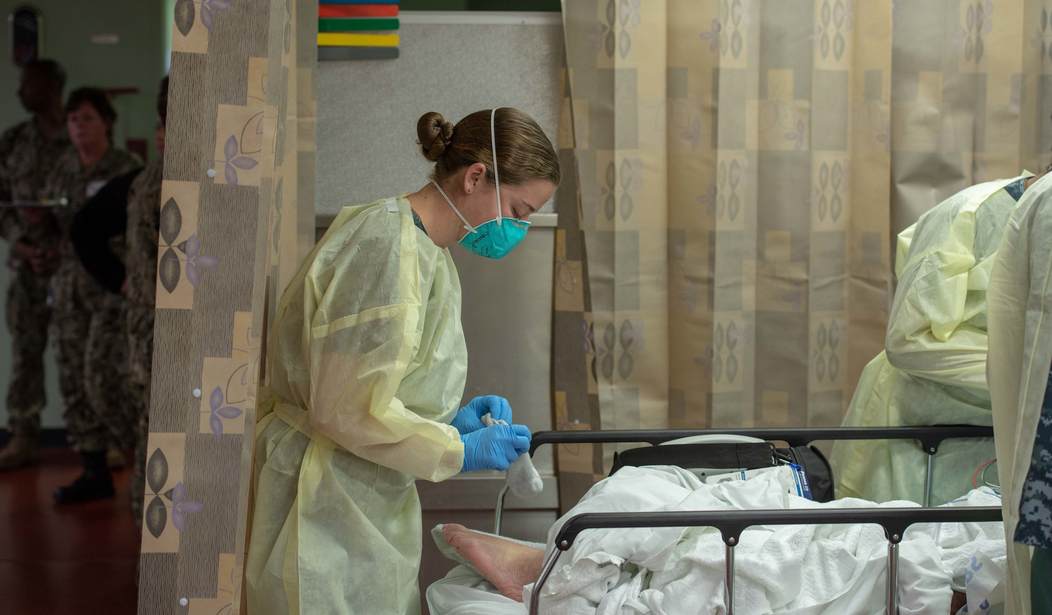If you spend much time on public health sites, you’re bound to come across the term “tripledemic.” It refers to what the New York Times calls the “viral onslaught” of Covid-19, influenza, and respiratory syncytial virus (RSV) — the last being blamed for a worrying increase in hospitalizations among children.
Public health officials are blaring out the warning: “Fear winter respiratory viruses! Mask up, socially distance yourself, and stay away from crowds” is the usual advice.
But the best available evidence contradicts that narrative, especially when it comes to avoiding winter respiratory viruses. The bottom line is that there are three things to remember about the “tripledemic”:
- There is limited evidence that it exists.
- There is no avoiding respiratory viruses.
- There is no evidence that prolonged precautions delay the inevitable.
As far as the reality of a “tripledemic,” it may very well be that other factors like reduced pediatric beds at hospitals and the general understaffing at medical facilities make the viral outbreak only seem worse than it actually is. Saying that a pediatric ward is 80% full today is different than saying the same thing ten years ago because there are fewer beds. With falling birth rates in the U.S., pediatrics just isn’t the moneymaker it was during the baby boom.
Dr. Vinay Prasad of the University of California San Francisco points out what used to be obvious to public health professionals.
Second, there is no avoiding respiratory viruses. With extreme, draconian measures, exposure to respiratory viruses can be delayed, but can never be averted. This is in contrast with, say, our ability to avoid contaminated drinking water or sexually transmitted diseases. The difference is that human beings have to breathe every minute of every day. And, as humans are social creatures, most of that breathing will naturally be very close to other human beings.
“The piper must be paid at some point in nature; kids will get sick, and it has nothing to do with a more compromised immune system,” says Dr. Danuta Skowronski from the British Columbia Centre for Disease Control.
The emphasis on “protecting” children is misguided and even dangerous. “It is natural, healthy, and necessary for young children to be exposed to many viruses,” writes Dr. Pasad. “In order for children to build immunity to common pathogens—in order for them to develop a normally functioning immune system—they must have such exposure, which will sometimes make them sick.”
Indeed, sticking a mask on a child to protect him is “akin to burning an incense stick, or wearing garlic to ward off vampires,” Prasad writes.
And third, there is no evidence that the interventions purported to stop Covid-19, flu, and RSV will help. Before Covid-19, the evidence to support masking was thin. I co-authored a survey of masking trials that were done prior to the advent of Covid-19, examining whether masks stopped transmission of respiratory viruses. Fourteen of the 16 trials showed masks were ineffective at this. In other words, the pre-Covid evidence was clear that recommending masks for the average person was useless. This is likely one reason why Dr. Anthony Fauci, the CDC, the World Health Organization, and others initially advised against masking.
Even worse, the evidence for masking young children for Covid-19, flu, and RSV viruses is entirely lacking.
A noted health information non-profit, Cochrane.org, conducted a massive study on not only the effectiveness of masks in stopping viral outbreaks of flu and RSV, but also of social distancing, quarantining, hand washing, and wearing NP-95 respirators. The group looked at dozens of studies on the effectiveness of preventing the spread of respiratory viruses.
The pooled results of randomised trials did not show a clear reduction in respiratory viral infection with the use of medical/surgical masks during seasonal influenza. There were no clear differences between the use of medical/surgical masks compared with N95/P2 respirators in healthcare workers when used in routine care to reduce respiratory viral infection. Hand hygiene is likely to modestly reduce the burden of respiratory illness.
What Dr. Prasad and a growing number of public health professionals are realizing is something most of us concluded years ago. The risk/reward factors in virus mitigation is a decision each of us, as autonomous human beings, must make for ourselves and our children.










